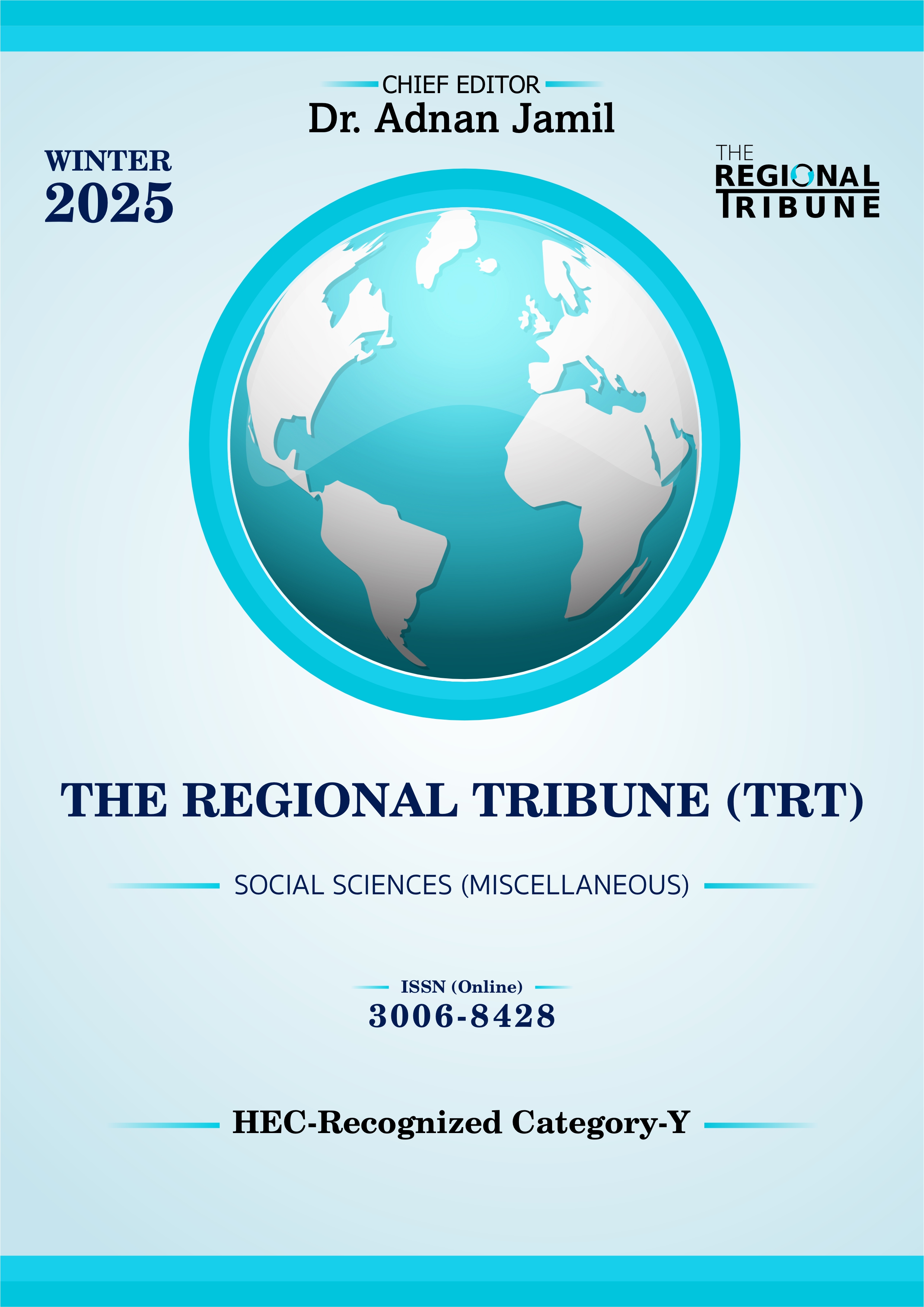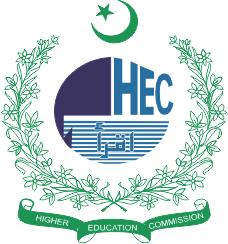Food Security Challenges in Rural Pakistan: Analyzing the Socio-Economic and Farming Dynamics
DOI:
https://doi.org/10.63062/trt/WR25.083Keywords:
Food Accessibility, Odds of Being Food Secure, Joint Family System, Education Level, Agricultural Mechanization, Land Ownership, Logistic Binary RegressionAbstract
Despite being an agrarian economy, food insecurity is a major challenge in Pakistan. This highlights the need for deeper insight for ensuring food availability and affordability for all. The study aimed to explore the root causes of household food insecurity in Punjab province. Primary data on structured questionnaire was collected from 237 farming households based on multi-stage cluster sampling technique. The analysis of the data revealed that fewer than two-thirds of households had reliable access to food in Punjab. The logistic binary regression provided insights about determinants of food security at household level. The larger families, typically those with four or more members, were found to be relatively more food secure. The older household heads and those with limited education were observed to be vulnerable to food insecurity. The availability of agricultural resources, such as tractor ownership and land title, indicated better chances of being food secure. However, the livestock and irrigated land was found to have poor odds of food security. This could be due to challenges associated with effective management of these assets. It was concluded that education, particularly up to primary level, may be imparted to the rural households for increasing food security in the short-run, targeted support for larger families was required to maximise their labor potential, and small-scale farmers needed to be provided better access to farm machinery and land title or land tenure security.
References
AHMED, F., Malik, N. I., Bashir, S., Noureen, N., Ahmad, J. B., & Tang, K. (2024). Political Economy of Maternal Child Malnutrition: Experiences about Water, Food, and Nutrition Policies in Pakistan. Nutrients, 16(16), 2642. https://doi.org/10.3390/nu16162642
AHMED, U. I., Ying, L., Bashir, M. K., Abid, M., & Zulfiqar, F. (2017). Status and determinants of small farming households' food security and role of market access in enhancing food security in rural Pakistan. PloS one, 12(10), 1-15. doi:https://doi.org/10.1371/journal.pone.0185466
Akbar, M., Niaz, R., & Amjad, M. (2020). Determinants of households’ food insecurity with severity dimensions in Pakistan: Varying estimates using partial proportional odds model. Health & Social Care in the Community, 28(5), 1698-1709. https://doi.org/10.1111/hsc.12995
Amare, A., & Simane, B. (2017). Assessment of household food security in the face of climate change and variability in the upper Blue-Nile of Ethiopia. J Agric Sci, 7, 285-300. https://doi.org/10.17265/2161-6264/2017.04.006
Asghar, Z., & Muhammad, A. (2013, August 14). Socio-economic Determinants of Household Food Insecurity in Pakistan. https://mpra.ub.uni-muenchen.de/21510/
Azeem, M. M., Mugera, A. W., & Schilizzi, S. (2016). Living on the edge: Household vulnerability to food-insecurity in the Punjab, Pakistan. Food Policy, 64, 1-13. https://doi.org/10.1016/J.FOODPOL.2016.08.002
Babar, A. B. (2020). Incidence, Depth and Determinants of Household Food Insecurity: Empirical Evidence from Pakistan. International Journal of Recent Scientific Research, 11, 37041-37048. http://dx.doi.org/10.24327/ijrsr.2020.1101.5046
Bashir, M. K., Schilizzi, S., & Pandit, R. (2012). The determinants of rural household food security in the Punjab, Pakistan: an econometric analysis. Research in Agriculture & Applied Economics. https://doi.org/10.22004/AG.ECON.122526
Bickel, G., Nord, M., Price, C., Hamilton, W., & Cook, J. (2000). Guide to measuring household food security. Alexandria, VA: United States Department of Agriculture. Food and Nutrition Service, Office of Analysis, Nutrition and Evaluation. https://fns-prod.azureedge.us/sites/default/files/FSGuide.pdf
Danso-Abbeam, G., Ogundeji, A. A., Asale, M. A., & Baiyegunhi, L. J. (2024). Effects of livestock ownership typology on household food security in rural Lesotho. GeoJournal, 89(2), 63. doi:https://doi.org/10.1007/s10708-024-11049-y
FAO. (1996). Rome Declaration on Food Security and World Food Summit Plan of Action. Rome. http://www.fao.org/docrep/003/w3613e/w3613e00.htm
Feyisa, B. W., Haji, J., & Mirzabaev, A. (2023). Determinants of food and nutrition security: Evidence from crop-livestock mixed farming households of central and eastern Ethiopia. Journal of Agriculture and Food Research, 12, 1-8. https://doi.org/10.1016/j.jafr.2023.100556
Getaneh, Y., Alemu, A., Ganewo, Z., & Haile, A. (2022). Food security status and determinants in North-Eastern rift valley of Ethiopia. Journal of Agriculture and Food Research, 8, 100290. https://doi.org/10.1016/j.jafr.2022.100290
GoP. (2018). National Nutrition Survey 2018, Nutrition Wing, Ministry of National Health Services, Regulations and Coordination. Government of Pakistan, Islamababad.
GoP. (2023). 7th Population and Housing Census 2023, Bureau of Statistics, Ministry of Planning, Development & Special Initiatives. Government of Pakistan, Islamabad.
GoP. (2024). Economic Survey of Pakistan 2023-24, Agriculture Chapter, Ministry of Finance. Government of Pakistan, Islamabad. https://finance.gov.pk/survey_2024.html
Hameed, A., Ali, T. M., & Abbasi, M. M. J. (2024). Comparative Analysis of Food and Nutrition Security in Pakistan: Implications for Sustainable Development Policies. SAGE Open, 14(4). https://doi.org/10.1177/21582440241285210
Herrera, J. P., Rabezara, J. Y., Ravelomanantsoa, N. A. F., Metz, M., France, C., Owens, A., . . . Kramer, R. A. (2021). Food insecurity related to agricultural practices and household characteristics in rural communities of northeast Madagascar. Food security, 13(6), 1393-1405. https://doi.org/10.1007/s12571-021-01179-3
Hlatshwayo, S. I., Ngidi, M. S. C., Ojo, T. O., Modi, A. T., Mabhaudhi, T., & Slotow, R. (2023). The determinants of crop productivity and its effect on food and nutrition security in rural communities of South Africa. Frontiers in sustainable food systems, 7, 1091333. https://doi.org/10.3389/fsufs.2023.1091333
Khan, F. M., & Sadozai, K. N. (2024). Comparing Food Security Status Using Dietary Intake and Expenditure Methods based on Socioeconomic Factors in Newly Merged Districts of Khyber Pakhtunkhwa. The Critical Review of Social Sciences Studies, 2(2), 580-597. https://doi.org/10.59075/fqxgsk74
Mahmood, T., Kumar, R., Ali, T. M., Naeem, N., & Pongpanich, S. (2023). Determinants of the food insecurity at household level in Pakistan: A multilevel model approach. PloS one, 18(10), e0291343. https://doi.org/10.1371/journal.pone.0291343
Mengistu, S. W., & Kassie, A. W. (2022). Household level determinants of food insecurity in rural Ethiopia. Journal of Food Quality, 2022, 1–9. https://doi.org/10.1155/2022/3569950
Miriam Wiemers, M. B., Asja Hanano, Réiseal Ní Chéilleachair, Aimée Vaughan, Connell Foley,, & Holger Mann, D. W., Katrin Radtke, Heidi Fritschel (2024). Global Hunger Index 2024: How gender justice can advance climate change resilience and zero hunder. Berlin, Germany. https://www.globalhungerindex.org/pdf/en/2024.pdf
Mudzielwana, R., Mafongoya, P., & Mudhara, M. (2022). An analysis of the determinants of irrigation farmworkers’ food security status: a case of Tshiombo irrigation scheme, South Africa. Agriculture, 12(7), 999. https://doi.org/10.3390/agriculture12070999
Munawar, M., Shiwei, X., Wen, Y., & Luqman, M. (2021). Investigating relationship of food security with market approachability with respect to Household Food Insecurity Access Index. Journal of Economic Impact, 3(3), 130–136. https://doi.org/10.52223/jei3032101
Nawaz, R., Iftikhar, M., Khan, G. A., & Akhtar, S. (2022). Food Security and Vivacious Circle of Poverty Among Rural Households in Pakistan. Journal of South Asian Studies, 10(3), 323-331. https://doi.org/10.33687/jsas.010.03.4437
Naz, M., Khan, I. A., Mann, A. A., & Shahbaz, B. (2020). Women s contribution in provision of household food security: A study from rural areas of Punjab, Pakistan. Rawal Medical Journal, 45(1), 196–196.
Pervaiz, B., Li, N., Manzoor, M. Q., & Yaseen, M. (2017). Socio-economic characteristics of farming community and food security situation in Punjab, Pakistan. Journal of Agricultural Science, 9(8), 130-130. https://doi.org/10.5539/jas.v9n8p130
Re'tlinger, S., & van llolst Pellekaan, J. (1986). Poverty and Hunger: A World Bank Policy Study. Washington, DC: World Bank.
Saini, R., Kaur, M., Singh, R., Arora, K., Singh, G., Kaur, G., . . . Singh, D. (2022). Understanding sustenance of small farm holders: A study of income inequality among farm households in Indian Punjab. Sustainability, 14(20), 13438. https://doi.org/10.3390/su142013438
Seligman, H. K., Laraia, B. A., & Kushel, M. B. (2010). Food insecurity is associated with chronic disease among low-income NHANES participants. The Journal of nutrition, 140(2), 304-310. https://doi.org/10.3945/jn.109.112573
Shair, W., Afzal, H., Ahmad, A., & Iftikhar, R. (2024). Exploring the Determinants of Food Insecurity in Pakistan. Pakistan Journal of Humanities and Social Sciences, 12(3), 2681-2689. https://doi.org/10.52131/pjhss.2024.v12i3.2494
Tan, S. P., Ng, L. C., Lyndon, N., Aman, Z., Kannan, P., Hashim, K., ... & Ibrahim, M. S. C. (2023). A review on post-COVID-19 impacts and opportunities of agri-food supply chain in Malaysia. PeerJ, 11, e15228. https://doi.org/10.7717/peerj.15228
Downloads
Published
Issue
Section
License

This work is licensed under a Creative Commons Attribution-NonCommercial 4.0 International License.



